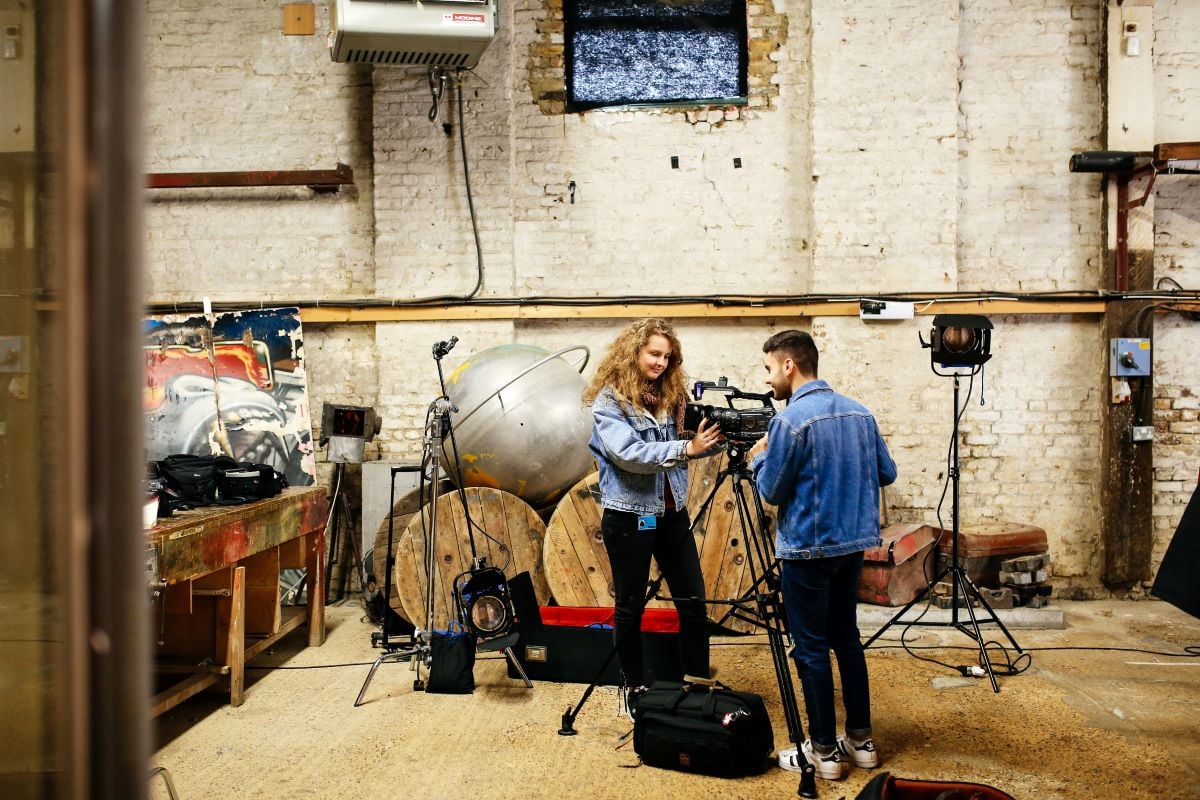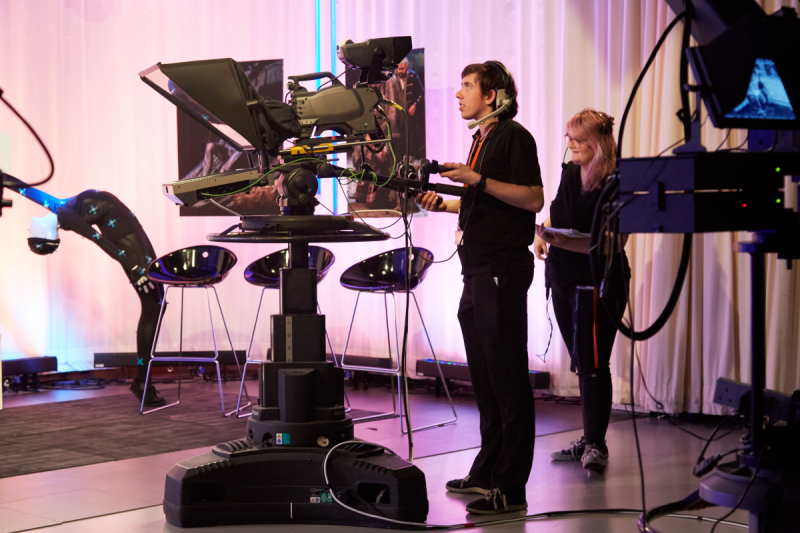
Film and TV students, Ravensbourne University London
Photo: Alys Tomlinson
Creative degrees can deliver skills and employment
In Culture Minister Lucy Frazer's first address to the sector, she highlighted the skills gap facing the creative industries. So how can industry and education come together to address this? Andy Cook of Ravensbourne University has some thoughts.
This shouldn’t be a difficult problem to solve. The creative industries are an attractive prospect for employment. From the arts, architecture and design to film, fashion and gaming, there are opportunities for stimulating careers creating the cultural moments that enrich our lives.
The question is, what are the right skills and where are they needed? What are the routes into these industries and who are they for?
It’s up to industry and educators to solve this problem together, with the support of government. The challenge is that industry is not always good at articulating the skills that it needs, educators don’t always support students to transition into employment and the government struggles to deliver joined-up policies that provide long-term solutions.
These challenges are interlinked, but one further barrier sits across all three: a lack of awareness and understanding of the opportunities available.
Cognitive dissonance
It was refreshing to hear Frazer talk about the need for “awareness from a young age”. There is a cognitive dissonance, however, between a government that values the creative industries and apparently understands the need for skills yet underfunds arts and creative education. It’s time this was rebalanced and creative skills better championed.
In February, Ofsted published its latest curriculum research. Art, craft and design, it stated, “is an important subject for all pupils, including those with special educational needs and/or disabilities”. This last point is pertinent.
I personally struggled with an academic secondary education, as do many pupils who have different ways of learning that don’t fit the mould, yet there are different ways to demonstrate intelligence. The creative industries are a particularly suitable outlet for people who benefit from more spatial, visual, kinetic or non-linear ways of thinking and learning.
Yet there remains a disconnect also between this vast potential talent pool and the pipeline into education and jobs.
How can opportunities be made visible?
There is also an urgent need to attract talent from under-represented backgrounds. Only a few months ago, the Guardian declared that the lack of social mobility in the arts to be an “enduring scandal”, following research based on Office for National Statistics data which revealed creative workers with a working-class background make up just 7.9% of the workforce.
Meanwhile a 2020 report by LSE’s Dr Clive Nwonka demonstrates that participation in the film industry for people of diverse ethnicity remains considerably lower than other under-represented groups, particularly in behind-the-camera roles. Part of the problem is perception of what a career in the creative industries involves.
Frazer quoted recent research from the BFI and careers app ERIC, which discovered that “only 6% of young people believe a career in the screen industries is achievable”.
These young people are probably imagining the genius director, the star actor or a cameraman with great technical skill. They might even consider the costume or set designer. But there’s a huge cast of people behind every creative success story. They include a host of specialist skilled technical and freelance roles such as animators, visual FX and sound designers, as well as production managers, distribution and finance teams, IT specialists and HR managers.
How can we make these opportunities more visible? There is an obvious need to educate teachers and careers advisers.
 Students at Ravensbourne University London
Students at Ravensbourne University London
A false economy
The BFI has begun work to address this careers education, with support from Ravensbourne’s TV and Film courses, but it’s an issue that cuts across all the creative industries.
Of course, responsibility doesn’t just lie with secondary education providers. Higher education has an essential role to play in informing students about the opportunities available to them post-graduation and ensuring they leave education with the skills that industry needs.
Arts degrees have been under fire in recent years, with regular hot air about ‘mickey mouse’ creative subjects “costing the taxpayer” because some alumni don’t earn enough to pay back their student loan in full. This has been mirrored by a drive towards increased funding for further education and apprenticeships as more direct pathways into employment.
To frame arts degrees and education as worthless is a false economy, illustrated by these very industries “pumping £116bn into the national purse every year”. It’s time government began to realise this, but it’s also time for industry and education to pull together to demonstrate how creative degrees can deliver skills and employment. A degree should not be solely about employability, but employment prospects matter and creating direct pathways into industry from degrees is possible.
Learning spaces reflect the world of work
At Ravensbourne University London, 87% of undergraduate students are employed within six months of graduation. We achieve this by partnering with employers and embedding the skills and experience they need into our courses.
In September we launched a new curriculum which includes a professional practice module, giving students work-based learning opportunities in every year of their studies. Real-world projects range from design students creating a motion graphic for ITV to architecture students designing for communities in East London. We have structured our learning spaces and frameworks to reflect the world of work, encouraging interdisciplinary collaboration through project teams drawn together from across departments.
We’ve also looked at the soft skills needed to futureproof the workforce, a common frustration for employers. As part of the Jobs Reset Summit in 2020, the World Economic Forum identified the top 10 skills of the future. They include analytical thinking, innovation, active learning, creativity, initiative and an ability to work with technology. These are now baked into every Ravensbourne course, whether that be in photography or digital fashion design.
This deep level of learning is something which I believe can only be achieved through a degree, which allows room for extra-curricular development and plenty of “learning for learning’s sake”.
At Ravensbourne, we have found a way to match education and training provision with the needs of industry and create direct routes into employment. We would welcome – now – joined-up policy support from DCMS, aligned with the Department for Education and the Department for Business and Trade. Together we can address these skills gaps and provide opportunities for more people to “enjoy fulfilling, well-paid jobs” in the UK’s creative industries.
Andy Cook is Vice Chancellor of Ravensbourne University London.
![]() www.ravensbourne.ac.uk/
www.ravensbourne.ac.uk/
![]() @RavensbourneUK
@RavensbourneUK
Join the Discussion
You must be logged in to post a comment.